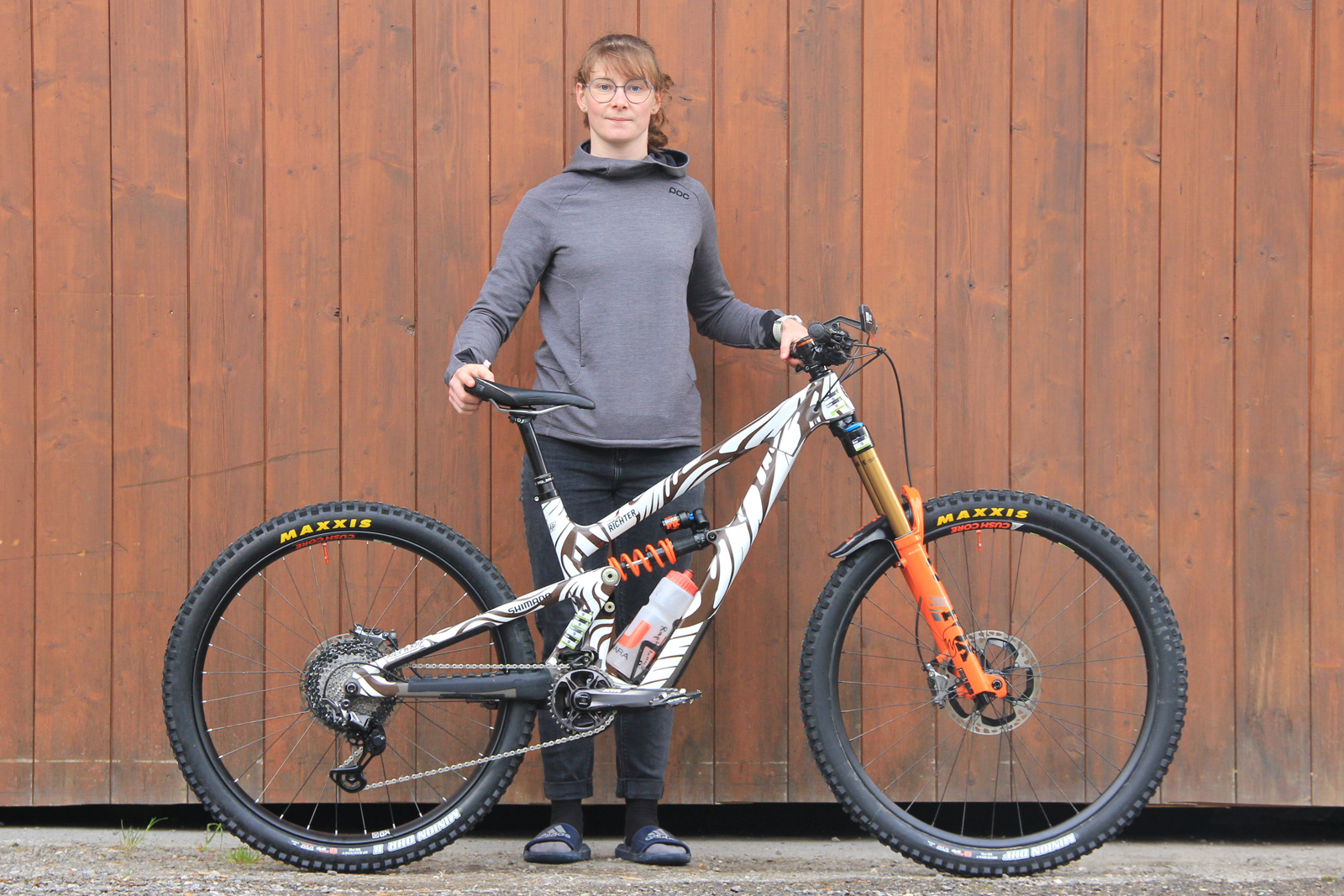The Ibis Enduro Race Team’s Raphaela Richter is backing up last season’s 9th position in the overall with some very strong results at the European rounds of the UCI-EDR in 2023; 4th place in Pietra Ligure, followed by 4th place in Leogang, and 9th place in Val di Fassa. And, she’s doing it on the all-new Ibis HD6 that was released just a few days ago.
This is the best looking enduro bike released in 2023. Fight me.
It looks ever so capable. This dedicated mullet pairs a 180mm travel fork with 165mm in the rear. It combines that with super short seat tubes and super short head tubes across the S-XXL range, giving riders all the room they could ever need to throw shapes in the cockpit. We are very much looking forward to testing this one but, in the meantime, let’s check out how Germany’s National Champion configured hers at the UCI-EDR Leogang, Austria.
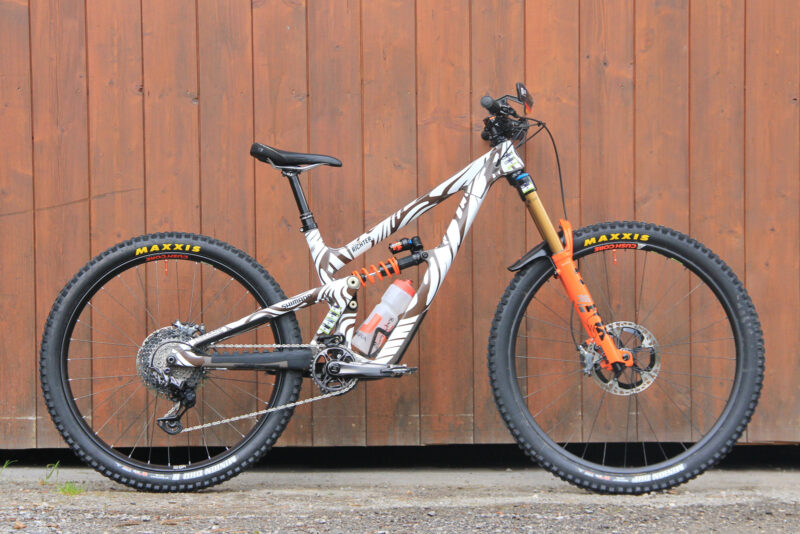
Pro Bike Check: Raphaela Richter’s Ibis HD6
At 164cm tall, Raphaela Richter rides the Ibis HD6 in a size medium, with a 454mm reach and a 374mm seat tube length. That allows her the freedom to run a 160mm dropper from Bike Yoke, which is at least 10mm longer than the drop length she has been able to benefit from on previous race bikes. Indeed, all sizes of the Ibis HD6 boast an ultra-short seat tube (470mm on the XXL) that should allow most folk to benefit from increased drop length.
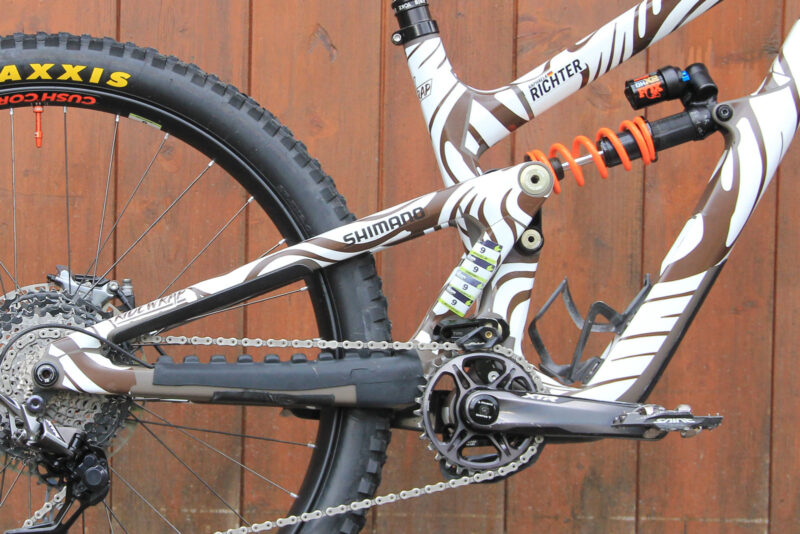
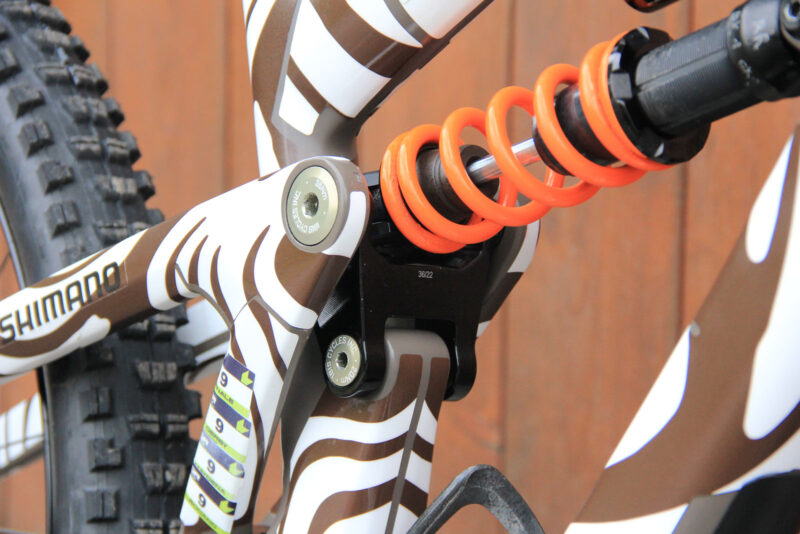
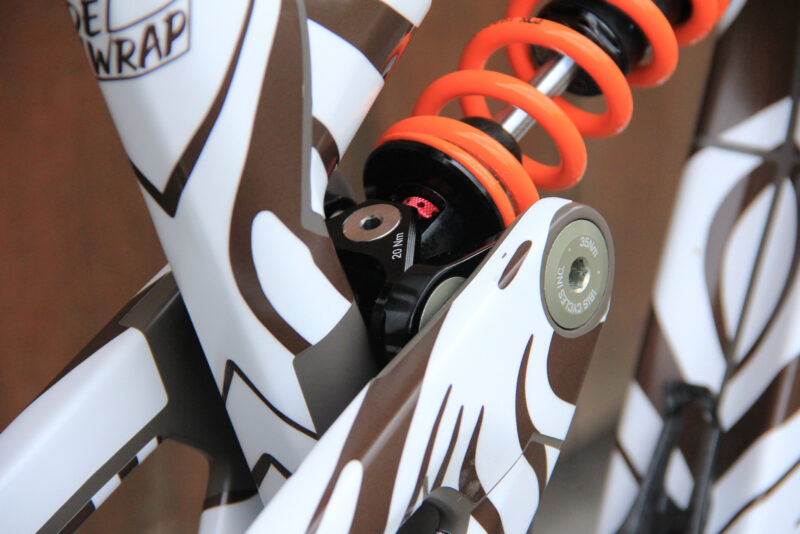
The HD6 delivers its 165mm rear wheel travel via a new dw-link layout, with a very short yoke making it compatible with all coil shocks. Raphaela takes advantage of that fact with a Fox DHX2 and a 350 lbs spring with a little pre-load to remove play. She tells us the coil shock makes the ride feel far more supple, to the point where it simply feels like a small downhill bike.
On the damping front, low speed compression (LSC) is set to 10 clicks from closed, with HSC at 6 clicks from closed. Low speed rebound (LSR) is 11 from closed, slowed down a little in comparison to the settings chosen for Pietra Ligure. HSR is set to 5 clicks from closed.
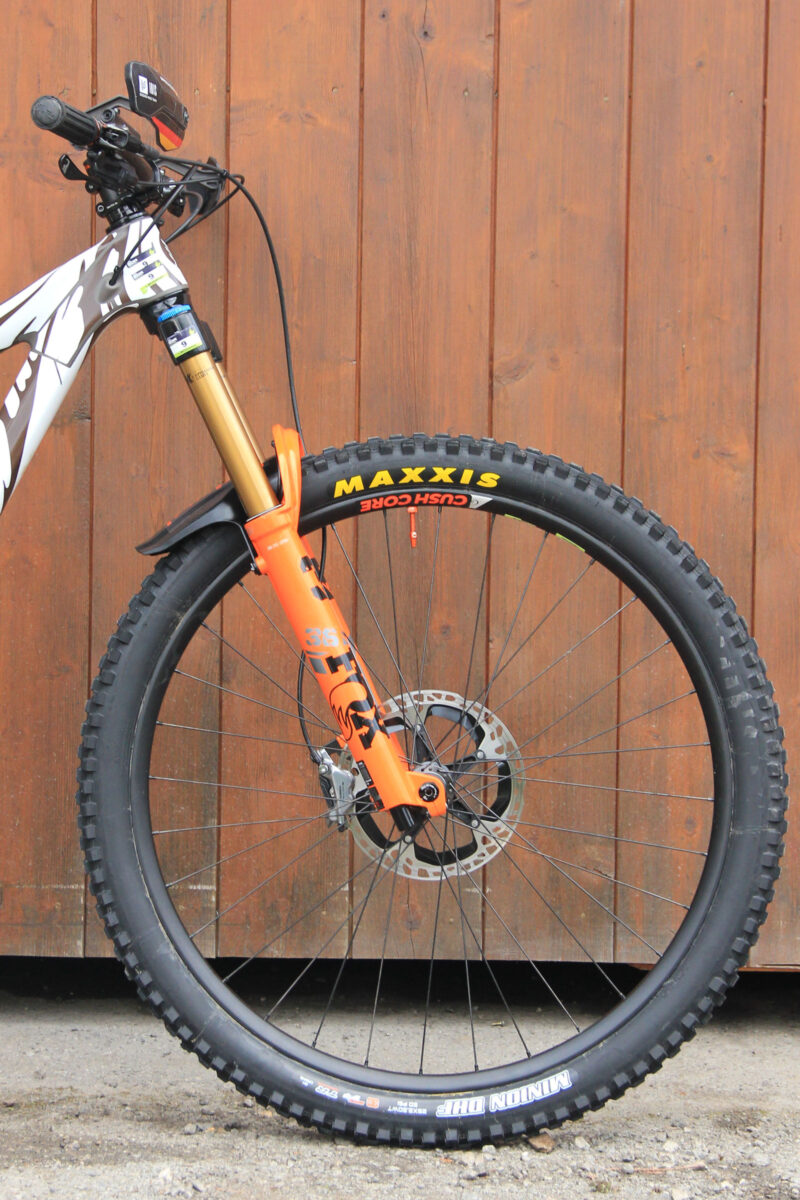
While most enduro racers have now switched to a 38mm stanchion fork, on Raphaela’s HD6, we see a 180mm travel Fox 36 fork. The air spring is populated with 62.5 PSI and zero volume spacers. She tells us she tried the Fox 38 but didn’t feel much of a difference in stiffness over the Fox 36. For this relatively lightweight rider there was nothing to be gained with the ~250g weight penalty of the burlier fork.
Raphaela has the HSC and LSC dials open, with LSR at 13 clicks from closed, and HSR at 5 clicks from closed. Again, as compared to the riding in Pietra Ligure, Raphaela felt she needed to slow down the fork’s rebound speed for the more bike park oriented race tracks of Leogang.
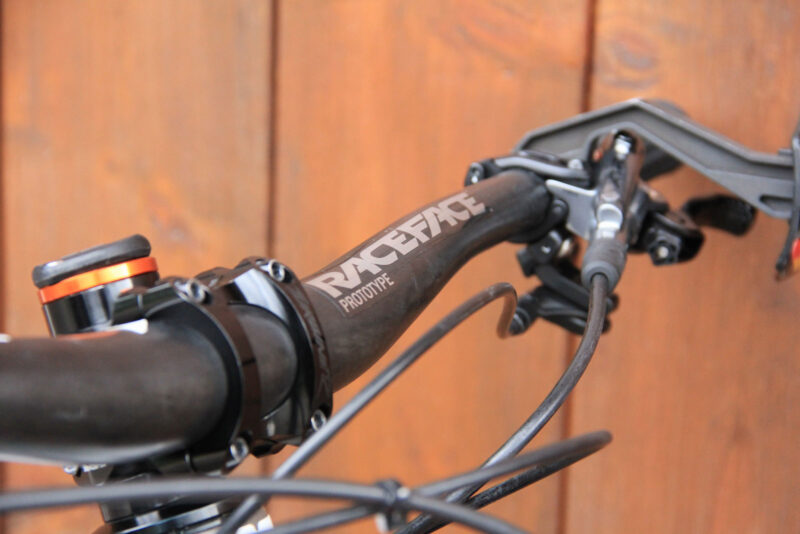

In the cockpit, we see a prototype carbon handlebar from Race Face. It has a 35mm clamp diameter, and Raphaela cuts hers to 730mm wide. It has a 20mm rise, 5° up-sweep and 8° back-sweep. The fork’s steerer is cut to allow for 10mm of spacers under the stem, and 10mm above, leaving scope for some ride height adjustment from race to race. Lizard Skins grips are her chosen contact points, with SendHit Nock Hand Guards protecting her hands.
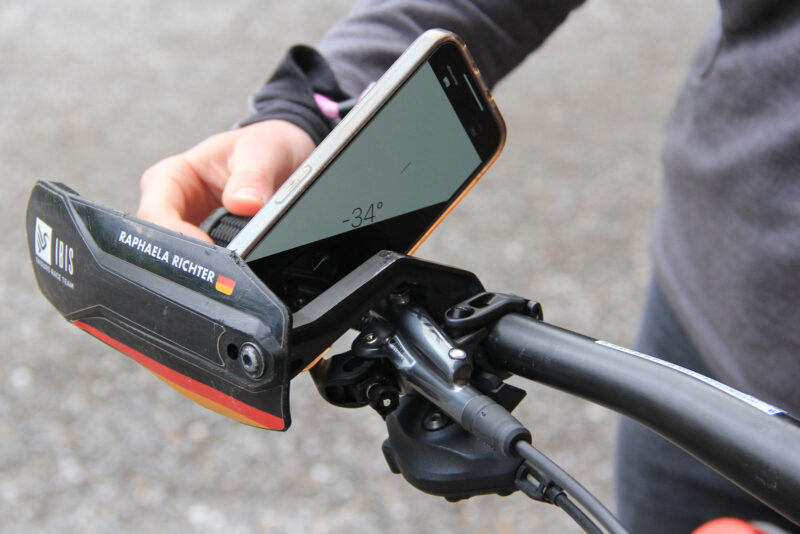
From what we’ve seen of the women’s field over the years, it seems Raphaela is one rider who is more than happy to exchange more puncture protection for a little extra weight.
Her HD6 rolls on Ibis’ own-brand Blackbird Send aluminum wheelset with an asymmetric 35mm internal width rim. The front is home to a 29″ x 2.5″ WT Maxxis Minion DHF of the MaxxGrip, Downhill Casing flavor, while the rear gets a 27.5″ x 2.4″ WT Maxxis Minion DHR II, also of the MaxxGrip, DH Casing flavor, but with a CushCore Pro thrown in there for good measure. She tells us that, after missing out on a podium place last season thanks to a punctured Double Down casing front tire, she is not willing to take the risk with the lighter tire going forward.
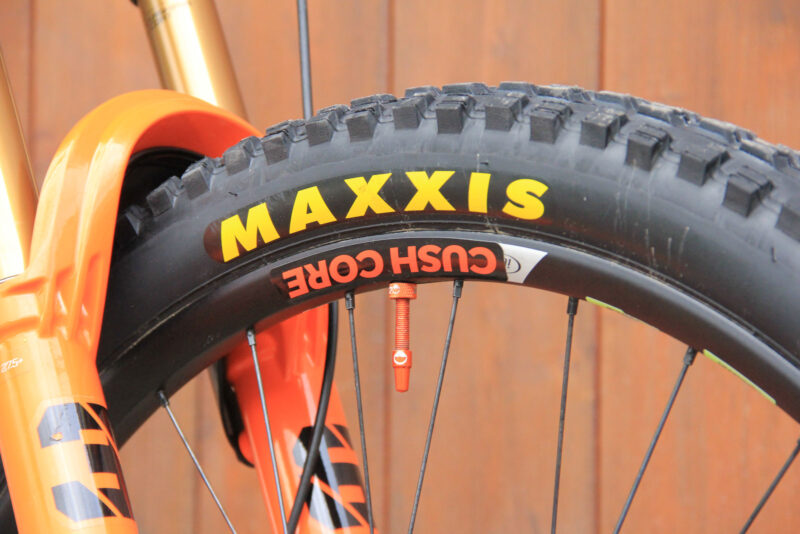
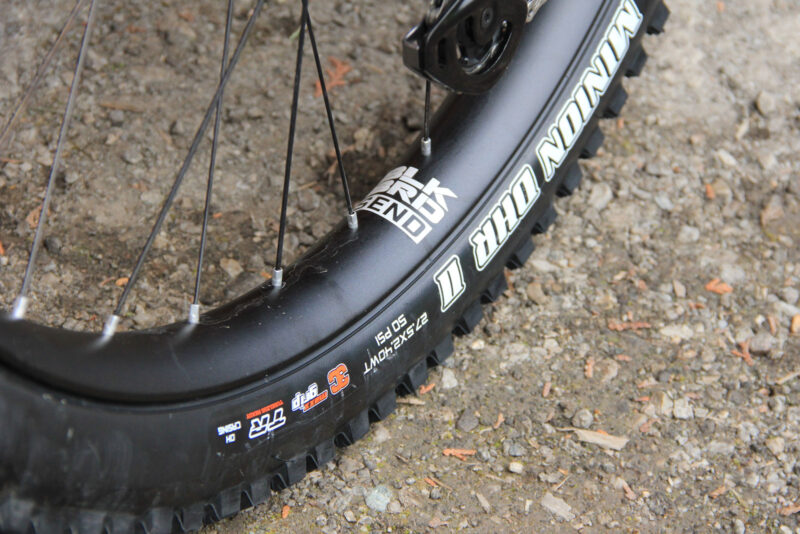
Most of the time, she runs 19 PSI in the front with 20 PSI in the rear, but for the sharp rock gardens of Pietra Ligure, she felt the need to increased that to 22 PSI in the front and 24 PSI in the rear after denting a rim in practice.
This season, Raphaela has upgraded the brake rotors to 203mm front and rear. Last year she ran a 180mm rotor in the rear, but now figures that the weight penalty is worth it if she’s not “smoking the brakes” on descents.
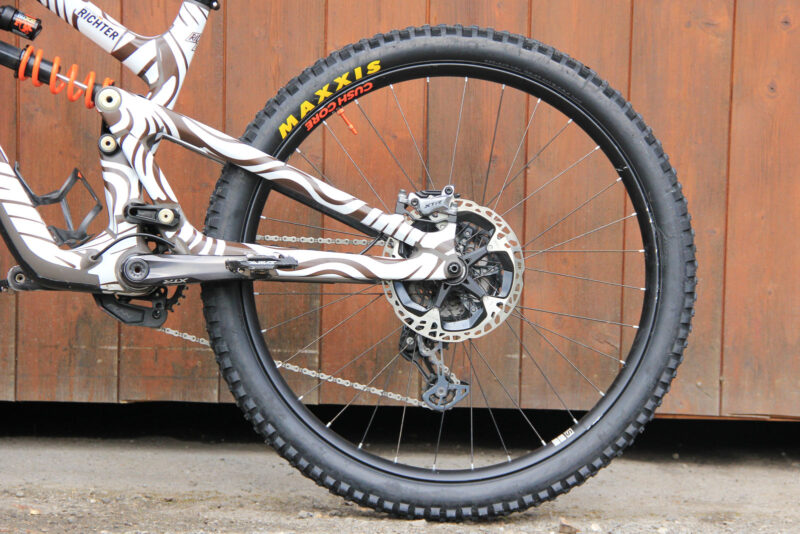
In the drivetrain department, the German Champ again opts for a less vulnerable configuration, running a narrower range 10-45T cassette with a shorter-cage Shimano XTR derailleur. She says the smaller derailleur flaps around less than the longer cage version that would be required with the 10-51T cassette, and she feels it makes the suspension work better as a result.
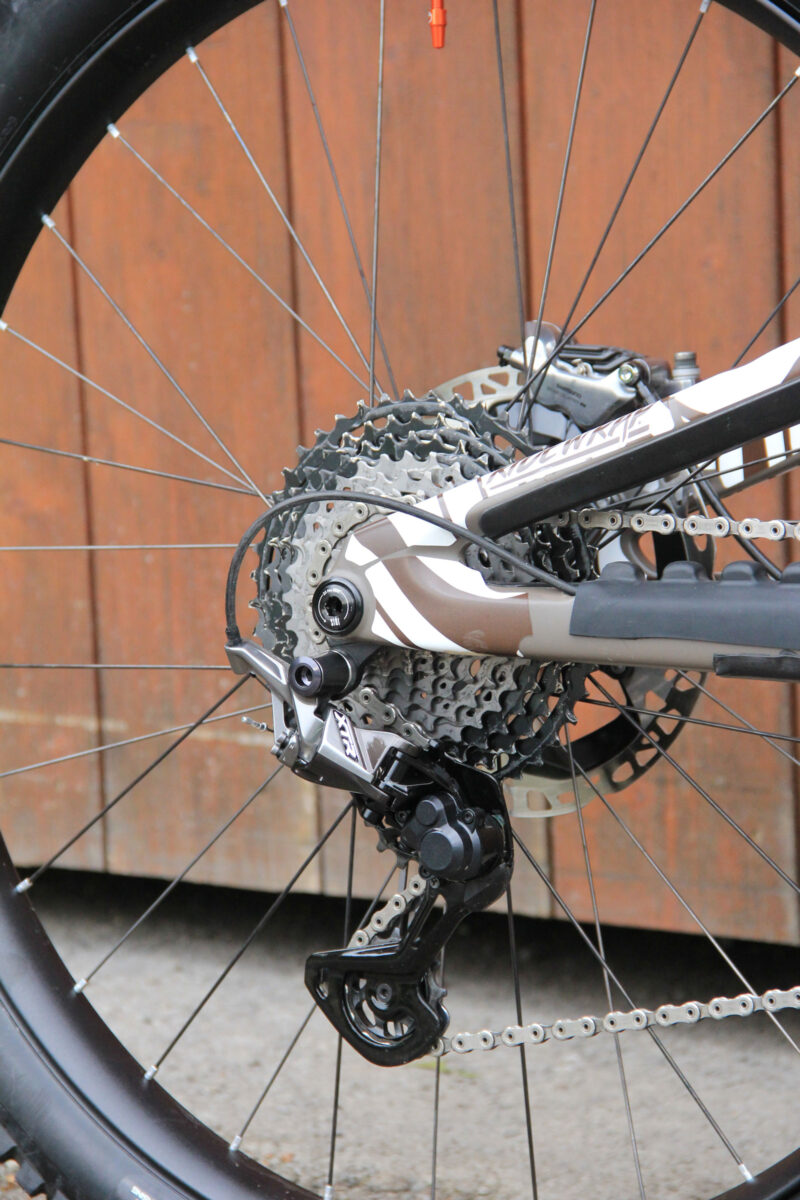
She is, however, pushing some harder gears than most of her competitors. She tells us that on some of the climbs, she would prefer to have the bigger cassette, but prefers the smaller option for the descents. And, that’s what matters right? She is more than happy to push the bike up steep liaisons where necessary.
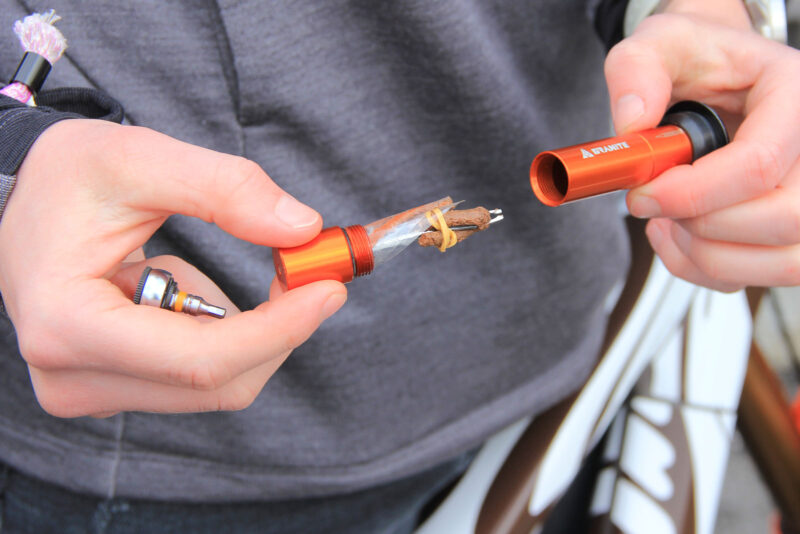
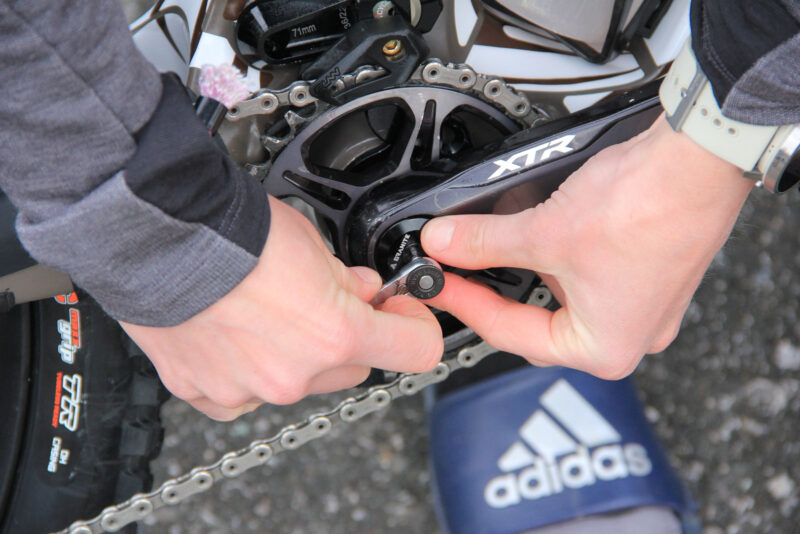
When it comes to managing repairs on the hill, Raphaela relies upon tools from Granite Designs that are stealthily stashed away in her handlebar and crankset. In the event of a puncture, out comes the Stash Tubeless Repair Kit, pre-loaded with a bacon strip ready for a quick fix on the trail side. While that one is stowed inside the bar, a multi-tool is stowed inside the steerer tube, necessary for removing the plugging tool from the bar end. Then, in the BB, there is a chain tool with spare quick-link ready to go if and when the chain breaks.
Raphaela is currently sitting in 6th position in the world rankings. Her and her competitors now have a long mid-season break before the action kicks off again in Loudenvielle-Peyragudes, France, on September 1st. Keep up to date with Rapahela’s race season on her Instagram.
